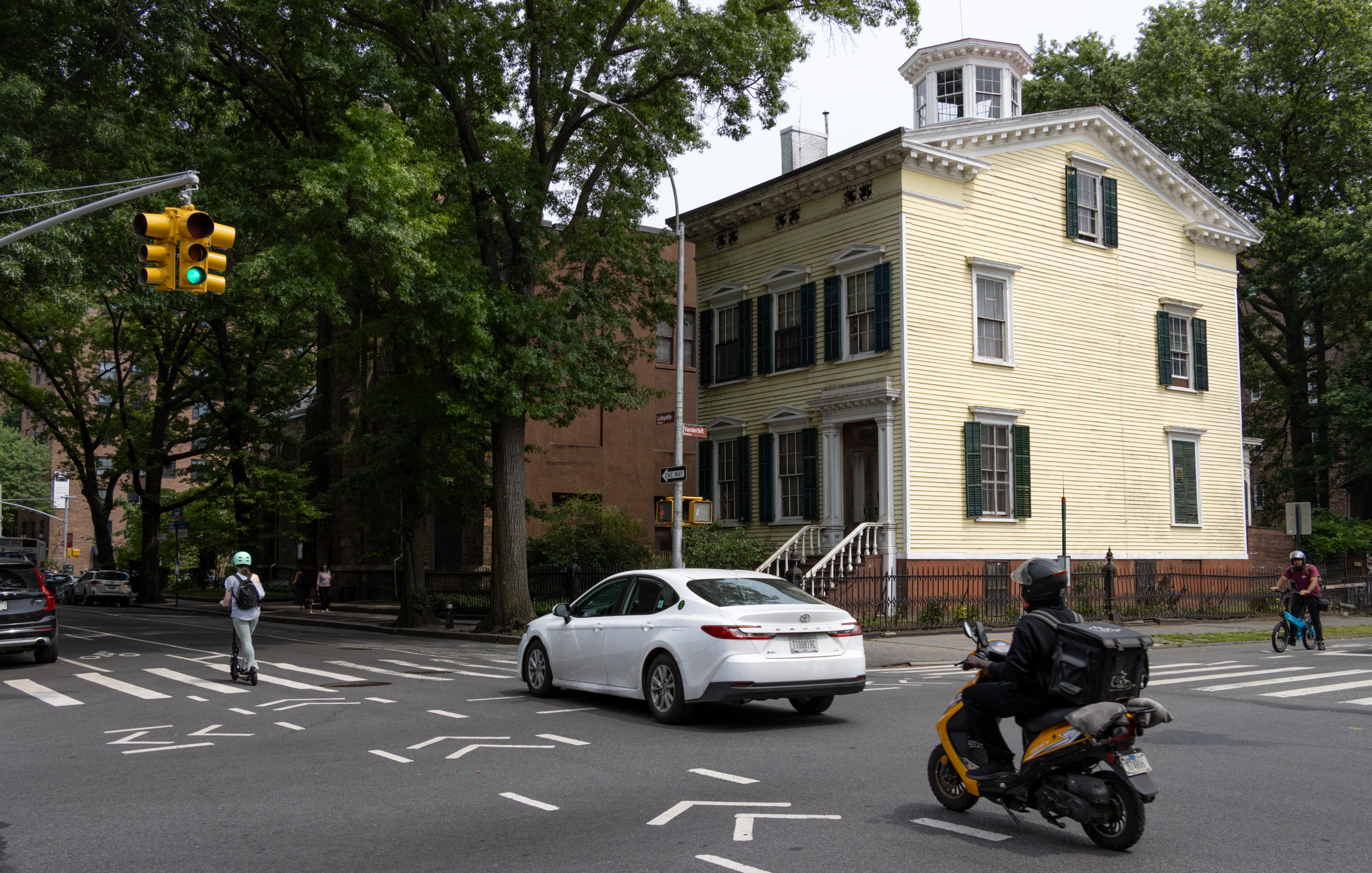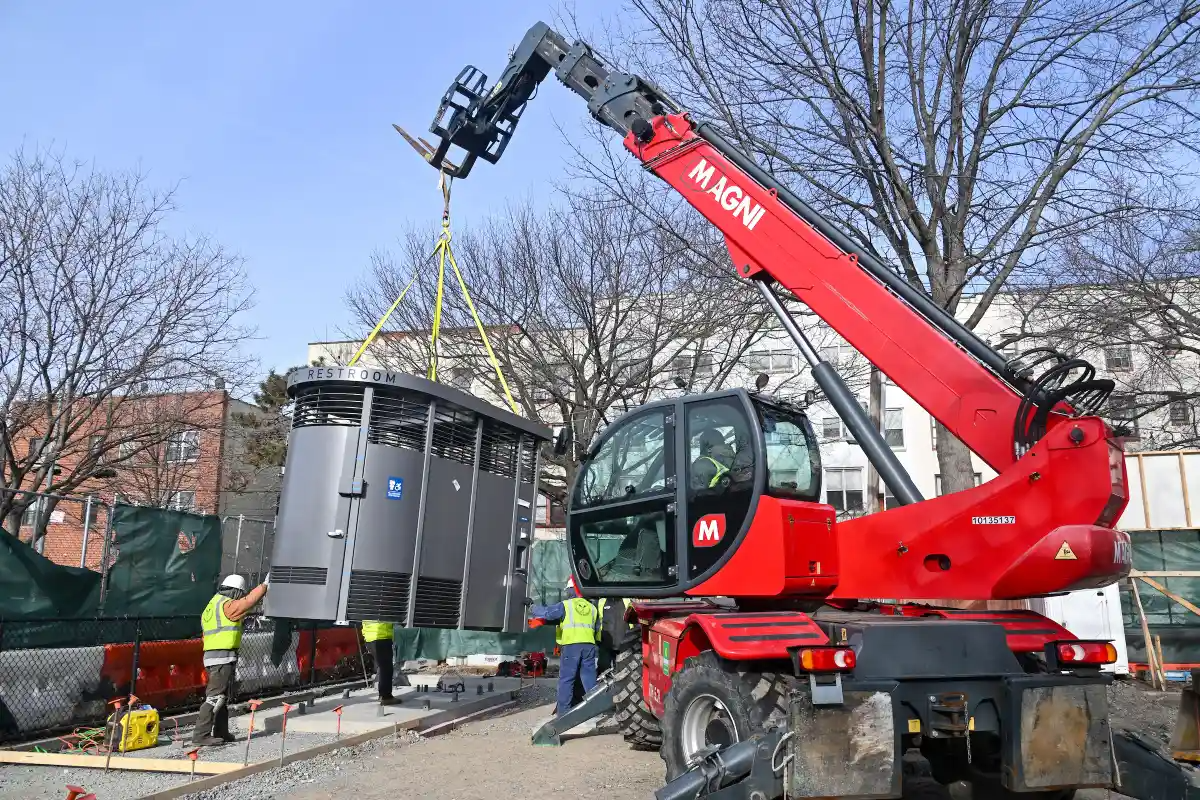Columbus Day is about Italian heritage, we've got that in Queens
Image source: Wikimedia Commons – Portrait of Christophorus Columbus by Sebastiano del Piombo Some of us may have today, Monday, October 8, off from work (or the kids are home from school) in observance of Columbus Day, a United States federal holiday that was signed into law by President Roosevelt in 1937. Columbus Day falls on the second…


Image source: Wikimedia Commons – Portrait of Christophorus Columbus by Sebastiano del Piombo
Some of us may have today, Monday, October 8, off from work (or the kids are home from school) in observance of Columbus Day, a United States federal holiday that was signed into law by President Roosevelt in 1937. Columbus Day falls on the second Monday of October, more or less near October 12, which is the day, in 1492, that Christopher Columbus landed in the “New World.” While the meaning of Christopher Columbus’s legacy has shifted over the centuries, Columbus Day is – and always has been – a celebration of Italian American heritage and culture, especially in New York City and Queens.
The celebration of Columbus Day was an idea put forth by the Knights of Columbus, a religious fraternal organization founded in 1882 by Father Michael J. McGivney to support recently arrived working immigrants of Italian descent. The Knights provided access to insurance, granted financial assistance to widows with families, gave academic scholarships and strove to advance the citizen status of the Italian immigrant in American society. After all, it was an Italian who discovered the Americas, and it was for that reason that they made the proud connection to the explorer, naming their fraternity after him in an effort to show the broader American public the patriotic and community-based values of the Italian people.
Christopher Columbus’s “New World”
Christopher Columbus (Christoforo Colombo) was born and raised in Genoa, a major port on the Mediterranean in Northern Italy, and he built a successful career working for powerful marine merchant families. Driven and ambitious, he taught himself learned subjects (some would argue incorrectly) such as classic literature and geography, and married the daughter of a local nobleman.
During this time, European merchants had been utilizing the overland route known as the “Silk Road” in their trading with China and India for spices and silks. With the rise of the Ottoman Empire, this passage way became unstable and an alternative was sought. The Portuguese, not surprisingly, were the first to get to Asia on the ocean by sailing south around the horn of Africa. Columbus bravely put forth the idea that Asia was actually closer to Europe than everyone thought, and could be accessed simply by traveling westward, an idea skeptically bought by Castilian monarchs Ferdinand and Isabella, competitively motivated and keen on continuing their mounting success conquering new territories.

Image source: Wikimedia Commons – The First Voyage, chromolithograph by L. Prang & Co.
With Spanish sponsorship and some Italian funding, Columbus headed off to Japan but, as we all know, bumped into a whole different land mass. In four separate voyages, Columbus explored the entire Caribbean, even establishing the territory of Hispaniola (with an unsuccessful stint as Governor), and he was keenly interested in expanding the reach of Christianity. While he was not the first European to get to the Americas – Norseman Leif Ericson had visited North America in the 11th century – by the 15 century Europe was eager to expand its reach and Columbus’s discovery effectively changed the course of the world.
The United States of America is not the only country to acknowledge the history-altering voyage of Christopher Columbus. Many Latin American countries celebrate Día de la Raza (Raza = Spanish speaking peoples), focusing on the spread of Hispanic culture. In some American states where indigenous populations remain large, including Hawaii, Alaska and South Dakota, Columbus Day has become Indigenous People’s Day, addressing the needs of other minority groups to find recognition and solidarity.
Italian history and legacy in Queens
The Italians have been deeply entrenched in Queens since the 1950s, when many moved to western Queens – Astoria, Maspeth, Middle Village, Elmhurst and Corona – from ghettos in Manhattan, the Bronx and Brooklyn, seeking a less urban lifestyle and taking up working class jobs. These communities were tightly knit and deeply entrenched.

They brought their cuisine, religion, past-times and style with them and, with increased resources, were able to support and perpetuate their rich culture in new ways. That is why you will find bocce courts on Steinway Street between 23rd Avenue and Ditmars Boulevard (GMAP), and a statue of Christopher Columbus (one of five throughout New York City) in Columbus Triangle at 33rd Street tucked just under the Robert F. Kennedy Bridge (GMAP). Restaurants built from the strong Italian community of this era include Sorriso’s Italian Pork Store at 44-16 30th Avenue (GMAP), Sicilian-run Forno Italia at 43-19 Ditmars Boulevard (GMAP), and Manducatis, at 13-27 Jackson Avenue (GMAP) with its unbelievably thick tome of stocked wines.
In the 1970s subsequent generations of Italian Americans proceeded to move east to neighborhoods including Bayside, Douglaston (home and filming studio of Lidia Bastianich!), Little Neck, and Whitestone, establishing themselves in increasingly sprawling suburban communities. But they stayed in Queens. It’s not surprising, then, that we have at least fourteen chapters of the Knights of Columbus all over Queens today.
Another group, the Federation of Italian American Organizations of Queens hosts Astoria’s annual Columbus Day Parade. This year it was held on Saturday, October 6, starting at noon at the Kaufman Astoria Studios and ending at the previously mentioned Columbus Triangle (check the site for the complete route). There’s also the enormous, star-studded Columbus Day Parade in Manhattan, produced by the Columbus Citizens Foundation, which can be viewed on Monday, October 8 from 11:30 am to 3:30 pm on WABC-TV.

Here are a few additional ideas on how to celebrate your inner culinary Italian during the week as many restaurants are closed on Monday:
- Enjoy a classic Italian meal served family style at neighborhood favorite Spolini’s in Kew Gardens, located at 116-25 Metropolitan Avenue (GMAP).
- Pick up a bag of biscotti, sfogliatella or ciabatta at Russo Bakery, locations at 69-11 Myrtle Avenue in Glendale (GMAP), and at 61-04 Grand Avenue (GMAP) in Maspeth.
- Have a glass of barolo and delicious light fare at the highly esteemed Trattoria L’Incontro at 21-76 31st Street, Astoria (GMAP).
- Be a guest at cozy Manducatis Rustica, run by the contemporary generation of the local Italian family serving up classic, fresh dishes, located at 46-33 Vernon Boulevard (GMAP).
- If you wish to go deeper into Italian American history, visit the Italian American Museum in Little Italy.





What's Your Take? Leave a Comment